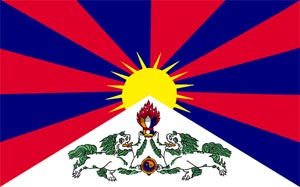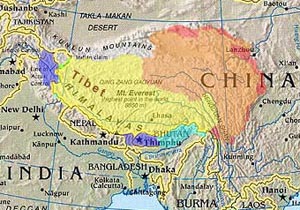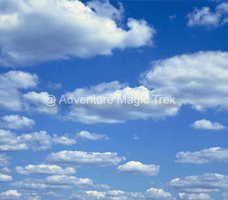
24 Hours Support Call
+977-9841570317 (Shankar Pandey)
email:info@adventurehikenepal.com
Facts of Tibet
| Overview of Tibet Mt. Kailash - Guge Kingdom TourKathmandu Lhasa EBC Tour Mt. Kailash Mansarovar TourSimikot - Mt. Kailash - Lhasa TourSimikot - Kailash - Zhangmu TourTibet Overland Tour |
Access to Tibet
 Travel information in Tibet is very fluid and the situation can change quickly, but if you are wondering if you can travel freely in this area, the answer would be that probably you can. It is true that besides a Chinese visa, a permit is also required for you to enter the TAR and there are also many places where lone foreign visitors are prohibited from entering. Nonetheless, many individual travelers have found ways to travel relatively freely throughout Tibet and many of them have been enjoying this freedom for years.
Travel information in Tibet is very fluid and the situation can change quickly, but if you are wondering if you can travel freely in this area, the answer would be that probably you can. It is true that besides a Chinese visa, a permit is also required for you to enter the TAR and there are also many places where lone foreign visitors are prohibited from entering. Nonetheless, many individual travelers have found ways to travel relatively freely throughout Tibet and many of them have been enjoying this freedom for years.
Of all the Tibetan areas in China, the TAR is a special case. Along with a visa, foreign visitors are officially required to have a permit issued by the PSB to enter the province. Without it, you'll be unable to buy air or bus tickets. However, you don't have to worry about where and how to get these permits. If you take common routes, such as Chengdu - Lhasa (Air), Golmud - Lhasa (Bus), etc., foreign travelers must buy both the permit and the ticket together through a travel agency.
Permit
In China, there are open and closed areas for foreign visitors. Unfortunately, most areas in the TAR are closed. If you want to go to the closed areas, you need to have the local PSB near those areas issue a Permit showing your destination. The availability of these very much depends on the situation at the time. To find out, either ask the PSB directly or gather some information from your fellow travelers. In case you can't obtain a permit for yourself, the other option is to charter a car through a travel agent. Using this approach, you can get permits for many of the closed areas, except some of the more sensitive border areas. In Qinghai, Gansu, Yunnan and other areas outside of the TAR, many Tibetan places are open to foreigners.
In Closed Areas
 In most cases, you can easily reach the closed areas when there are bus services running. In case you do turn up in a closed area without a permit by mistake you should be aware that you are breaking Chinese law and that you are all right as long as the PSB officers don't find you. Staying at a plain guesthouse at the end of town is less conspicuous than staying at a hotel in the center. There are also many towns where a notification prohibiting foreigners to stay at a hotel will prevail. In this case, you have no choice but to stay at a designated hotel. Even so, some guesthouse owners will still allow you to stay at their place, even though they know the regulation is in force. Many of them are Hui or Tibetan. On the other hand, some of the owners will notify the PSB and there is also the real possibility of being found out in town. If you are found in a town where there is no PSB foreign affairs section, your case might end simply by presenting your passport. In towns on a highway where foreigners often pass through, you are usually requested to move to a hotel designated by the PSB (even in closed areas, there are towns with designated hotels for foreigners on package tours). In most cases, the hotel that you are assigned will be the most expensive in that town. The PSB then puts a deposition on record and fines you. If you stay just 1 night, the PSB might not be too strict; however, in the TAR the local PSB might fine you up to Y500 (US$60). Once again, this price is negotiable and the amount of the fine depends on the place and the official. Some PSB officials will just make foreigners buy a bus ticket for the following day to get them out of their hair as soon as possible. Strangers are a real nuisance for police officers! In case you are caught on the way to, for example, Lhasa, some experienced travelers suggest that you tell the PSB that you actually came from Lhasa. Basically, the PSB then orders you to go back. Some foreigners have taken this a step further and prepared diaries to show local officials to prove this. In closed areas, you are frequently warned not to take photographs and the PSB have confiscated pictures from some tourists in the past. Even if you didn't intend to enter a restricted area, you should be careful.
In most cases, you can easily reach the closed areas when there are bus services running. In case you do turn up in a closed area without a permit by mistake you should be aware that you are breaking Chinese law and that you are all right as long as the PSB officers don't find you. Staying at a plain guesthouse at the end of town is less conspicuous than staying at a hotel in the center. There are also many towns where a notification prohibiting foreigners to stay at a hotel will prevail. In this case, you have no choice but to stay at a designated hotel. Even so, some guesthouse owners will still allow you to stay at their place, even though they know the regulation is in force. Many of them are Hui or Tibetan. On the other hand, some of the owners will notify the PSB and there is also the real possibility of being found out in town. If you are found in a town where there is no PSB foreign affairs section, your case might end simply by presenting your passport. In towns on a highway where foreigners often pass through, you are usually requested to move to a hotel designated by the PSB (even in closed areas, there are towns with designated hotels for foreigners on package tours). In most cases, the hotel that you are assigned will be the most expensive in that town. The PSB then puts a deposition on record and fines you. If you stay just 1 night, the PSB might not be too strict; however, in the TAR the local PSB might fine you up to Y500 (US$60). Once again, this price is negotiable and the amount of the fine depends on the place and the official. Some PSB officials will just make foreigners buy a bus ticket for the following day to get them out of their hair as soon as possible. Strangers are a real nuisance for police officers! In case you are caught on the way to, for example, Lhasa, some experienced travelers suggest that you tell the PSB that you actually came from Lhasa. Basically, the PSB then orders you to go back. Some foreigners have taken this a step further and prepared diaries to show local officials to prove this. In closed areas, you are frequently warned not to take photographs and the PSB have confiscated pictures from some tourists in the past. Even if you didn't intend to enter a restricted area, you should be careful.
Now, you are in the mood to embark on more adventurous travel than you have previously envisaged, let's look at 'Roads to Tibet.'
To get to the Tibetan capital, Lhasa, foreign travelers usually start from Chengdu in Sichuan, Xining in Qinghai or Kathmandu in Nepal:
[By Air]
1) Chengdu, Sichuan to Lhasa Direct daily flights are available between Chengdu, Sichuan, and Lhasa. You can easily get a ticket through a travel agency in Chengdu. There is also a comfortable 2-hour flight twice weekly between Chongqing and Lhasa.
2) Kathmandu to Lhasa From April to November there are 2 flights a week available between the Nepalese capital and Lhasa. You can get to Lhasa whilst enjoying a spectacular flight over the Himalayas. However, individual travelers can get neither a visa nor an air ticket, which are only available to members of an organized group.
[By Land]
1) Xining, Qinghai via Golmud to Lhasa This bus trip is tough going and takes a minimum of 2 nights and 3 days along the Qinghai-Tibet Highway. Although uncomfortable this is still the most popular route for travelers sticking to land transportation.
2) Kathmandu via Dram (Khasa) to Lhasa As with the Qinghai-Tibet Highway, the China-Nepal Friendship Highway is a popular route for travelers. This route brings you close to a number of famous sights, such as Shigatse, Gyantse, and the Everest Base Camp. It takes 5-7 days of traveling over the Tibetan Highlands to get to Lhasa via this route. This overland trip also subjects individual travelers to the same restrictions as access by air from Nepal.
Altitude Sickness:
Tourists in Tibet are always fretting about altitude sickness. It's a mysterious condition! The symptoms vary, with some people bed-bound for most of their stay in Lhasa while others really active on the day they arrive.
Our first experience with mountain sickness was in July, twelve years ago. We traveled from Golmud to Lhasa by bus and although the temperature down on the Silk Road was a blistering 40C, we were soon cloaked in falling snow as we climbed into the Tibetan highlands. Some hours after we left Golmud, I realized that I was becoming ill. As the bus climbed, a terrible headache, endless nausea, and cold chills swept over me, all aggravated by the fact that the bus had no heater.
I wondered whether this was mountain sickness but as I slipped in and out of consciousness, all I could think about was reaching Lhasa as soon as possible. As we neared a pass, the bus gasped hard and with a laboring sigh it dropped speed. I glanced through the window at a sign reading 5,231m above sea level, and at that point I really started to regret ever getting on-board.
That night we stayed in Amdo and I just flaked out on the bed in the pitch-black guesthouse. My condition wasn't improving and I couldn't sleep for the hammers in my head, and vague fears for my future. All the while I listened to another backpacker beside me who was asleep but having trouble breathing. It was a comfort to know that I wasn't the only one suffering. Calmed a little by this, I was asleep before I knew it. Next morning, with the bus descending gradually throughout the day I realized that I was starting to feel better and when we finally arrived in Lhasa my spirits were high and my condition was almost back to normal.
Some years later, we decided to skip the bus and instead we flew into Lhasa. Nothing happened to me on our first day and I was very relieved, thinking, "I am all right this time!" Two days later, it caught up with my partner and I with headaches, nausea, and high fevers. Although I was experienced in this area, I still had difficulty overcoming my anxiety, worrying about what on earth I would do if my condition got worse. My fever remained high, so we decided that it was better to be safe than sorry and off to the People's Hospital we went. The hospital was a real disappointment; first we were directed to different departments and finally the staff told us there was no medicine in stock. All this effort just seemed to make my condition worse.
When I explained our situation to the receptionist at our hotel, they introduced us to a clinic nearby. It was tiny and not very hygienic, but the doctor examined me and using a disposable syringe gave me the required injection. Moreover, this angel of mercy visited our hotel room and made sure there was an intravenous drip set-up, though the instructions to pull out the needle when it was finished was a bit surprising.
The following year we decided on another route and entered Tibet from Nepal overland. By this time we knew a lot about the hardships caused by altitude sickness, so we finally decided to execute a 'Diamox' tactic. It's a famous medicine among trekkers in the Himalayas, so we bought a substantial amount of it in Kathmandu, smiled, and said "With this, no pain!" Before we got in the chartered Land Cruiser in Dram (Khasa), we took a bit more of the medicine than instructed just to make sure. Within half-an-hour we had to stop the car for a call of nature. After that brief stop, the car pulled away again but within minutes I was bursting to go again. Yes, the medicine also has a diuretic effect.
We had to stop the car numerous times which annoyed the driver but gave the poor local women who was carsick the whole journey some relief. Finally after crossing another 5,000m pass, we safely reached Lhasa. After the ill effects subsided we were once again able to enjoy the Tibet of our dreams.
Tibetan Festivals
There are countless festivals held all over Tibet and this section highlights only the major ones in and around Lhasa. Horse racing festivals in the summer and harvest festivals during the fall are held throughout the region. The dates of even the same festival may vary from region to region. For example, the New Year's Day in Shigatse is celebrated at the beginning of December on the Tibetan calendar.
| List of Festivals | |
| Gutor / Ngan-pa gu-zom (Day before New Year's Eve) |
29th day of the 12th lunar month |
| Losar | 1st-3rd day of the 1st lunar month |
| Monlam (Prayer Festival) | 4th-11th day of the 1st lunar month |
| Chunga Choepa (Memorial Service on the 15th) |
15th day of the 1st lunar month |
| Tibetan Uprising Day | Mar 10, Western calendar |
| Saka Dawa Festival | 15th day of the 4th lunar month |
| Horse Racing Festival in Gyantse | 18th day of the 4th lunar month |
| The Unveiling of the Great Thangka at Tashilhunpo Monastery | 15th day of the 5th lunar month |
| Birthday of the 14th Dalai Lama | July 6, Western calendar |
| Zamling Chisang (Universal Prayer Day) |
15th day of the 5th lunar month |
| Choekhor Duechen | 4th day of the 6th lunar month |
| Guru Tsechu | 10th day of the 6th lunar month |
| Zhoton (Yoghurt Festival) | 30th day of the 6th lunar month |
| Bathing Festival | 27th day of the 7th lunar month |
| Horse Racing Festival at Damzhung | 30th day of the 7th lunar month |
| Harvest Festival | Early in the 8th lunar month |
| Labab Duechen | 22nd day of the 9th lunar month |
| Palden Lhamo Festival | 15th day of the 10th lunar month |
| Ngachu Chenmo (Tsongkapa Butter Lamp Festival) |
25th day of the 10th lunar month |



